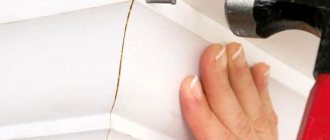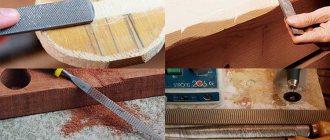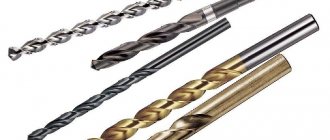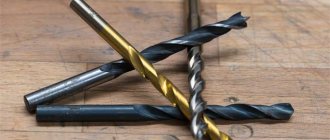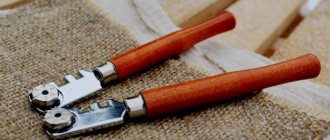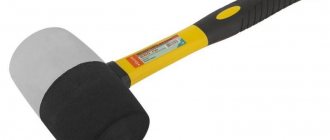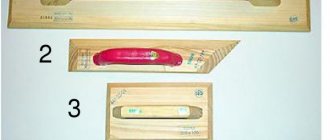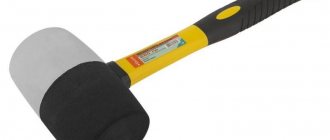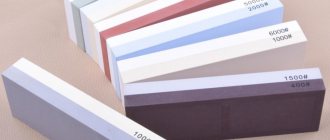Sandpaper, also known as sandpaper, is the name for sandpaper, a carpentry abrasive that has no analogues today. The material is used in various sectors of industry and life, from a construction site to an art workshop. Emery cloth is intended for manual and machine processing of wooden, plastic, ceramic and metal surfaces in the production of various products to improve the adhesion of elements when gluing or to prepare the surface for painting.
What is sandpaper
Sanding paper is a combined material that consists of:
- The basis of sandpaper is most often paper or fabric.
- Abrasive is a grain that is applied to a substrate using glue or resin.
Manufacturing
Sandpaper production was first started in China in the 13th century. Craftsmen glued river sand of various sizes, crushed shell rock, and plant seeds to parchment using agar-agar or starch glue. Later they came up with the idea of using crushed glass as an abrasive, hence the appearance of “glass paper.”
Serial production of sandpaper began in London in 1833, then began to spread throughout the world, technology improved, and today we see a variety of types of this product.
Production stages:
- The paper base or fabric is impregnated with polymers, most often rubber latex.
- Glue heated to 30...500C is applied to the prepared base.
- The abrasive of the required fraction is applied using the bulk method.
- The semi-finished product is sent to the oven for drying. The temperature depends on the type of glue, grain fraction and other factors.
In this way, you can make low-quality sandpaper at home using thick cardboard, crumbs from an abrasive wheel or crushed glass, sand.
Release form
Finished products are stored by stacking sheets or rolling them into rolls. Sheet fabrics have sufficient rigidity, so they are difficult to bend. Sandpaper in rolls is more compact to store, its fraction and grain size are smaller than that of sheet sandpaper.
Other release forms:
- The abrasive mesh is a sparse sheet with fixed grain. When sanding, even the smallest dust particles pass through the material and do not become clogged in the pores. This working method is called “dust-free sanding”.
- Abrasive wheels are fine-grained sandpaper cut to the shape of attachments for mechanical devices. Its purpose is to clean the metal surface from rust and remove old coating.
- Sandpaper of different grits, cut to the shape of the attachment for power tools with Velcro fastening or to the holes made.
- Sanding belts intended for threading into sanding machines and machines.
Marking
Sandpaper markings indicate the fraction and concentration of the abrasive. Domestic GOST 3647-80 determines the number of grains of different sizes per 1 square unit, but this classification is considered outdated. Today, sanding paper complies with international ISO standards; this designation can be found on the back of the product . It should be noted that the data of the old GOST and the values of international standards overlap with each other. Their correspondence can be seen in the table.
The main difference between the old and new standards is the different movement of numbers in the markings:
- In GOST 3647-80, the values of grain size and density are reduced, which is quite logical;
- In the new ISO 6344 standard (GOST 52318-2005), the product number increases with decreasing value in the marking.
Decoding grain size
The letter "P" in the designation indicates the grain size. The larger the value behind the letter, the finer the skin fraction. P400 is a known zero. P600...P2500 have small fractions and an almost smooth surface; their grain size is not so noticeable to the touch. This type of sandpaper is used for final polishing in industry.
In the old GOST, things were different. Using 10-N as an example: the first number means that an abrasive of a size corresponding to a sieve with a mesh of 100 microns is applied to the surface of the product. The lower the indicator, the smaller the screening size.
Other designations
Types of sandpaper differ in the composition of the base and the properties of the grains. This information is also reflected in the product labeling.
- The letter “L” indicates the sheet form of the product. Rolled is not indicated in any way.
- The letter "M" stands for waterproof sandpaper.
- The product marked “P” is intended for grinding dry products without contact with moisture.
- “1” is an abrasive for soft surfaces, “2” is for hard surfaces.
To select emery for a certain type of work, you should take into account not only the main classification, but also the information provided, which is contained on the back of the sheet.
Sanding with sandpaper
It has already been noted that the described material is required in many areas of activity:
- construction and finishing: processing putty surfaces in order to level them and get rid of small grooves from a spatula or sagging, stripping various materials (metal, wood, PVC) from old coating;
- car repair: performing various types of body work (removing traces of corrosion, treating the base before puttying and its subsequent leveling, sanding before painting, applying varnish, matting the surface before priming and other types of work);
- woodworking: sanding wood, obtaining a uniform surface, processing water-based paints and varnishes;
- painting work: treating bases before and after applying paint, smoothing out smudges;
- furniture repair and production.
Many home craftsmen find very original ways to solve certain problems. Here are some of them using skins “inappropriately”.
- Cleaning the seams between tiles. Stubborn stains in the spaces between tiles can be very difficult to remove using cleaning products. To do this, some craftsmen advise using a sheet of fine-grained sandpaper bent in half. The grout should be handled with great care, being careful not to damage the tile itself.
- Sharpening needles. This area of application will be appreciated by needlewomen. To return the needle to its former sharpness, simply pierce the sandpaper with it several times, or “wrap” the tip in sandpaper and rotate it briefly.
- Update your cutting board. Over time, wooden cutting boards become riddled with a fine network of knife grooves. This does not easily spoil the appearance of the product, but it is also very unhygienic, because such a surface is a “paradise” for bacteria and microbes. To level the base, you just need to use sandpaper.
- "Repair" of suede. Light abrasions and dirt from suede items can be removed with sandpaper. You should carefully walk it in places that require cleaning, and then “comb” it with a brush to return the pile to its place.
This is not a complete list of areas for using sandpaper, but it is impressive. The little things really add up to something bigger than what meets the eye.
The basis
Abrasive paper can be made on different materials:
- The bulk of products with abrasive are produced on a paper basis. To increase the strength of the paper web to tearing, abrasion, and bending, it is impregnated with polymers and resins. Thanks to these compositions, the product also acquires moisture-resistant properties. But still, paper is a fragile object and is not suitable for intensive long-term work. Fine grain is applied to it.
- Fabric-based sandpaper is more resistant to abrasion and wear. The grain holds just as well, the canvas additionally has elasticity and resistance to moisture, intensive work with various materials, even with a sander, for which they produce velcro attachments.
- Combined fabric-paper fabric (two-layer) combines the best properties of previous materials. The product is elastic, resistant to abrasion, bending, and moisture. Coarse-grained sandpaper is produced on a combined basis.
On sale you can find paper with a sponge base. This one allows dust to pass through well, is not afraid of moisture, and is suitable for manual and mechanical work for a long time.
Types of grain size by material
Abrasive is made on different bases:
- Silicon carbide (carborundum) is suitable for working with hard surfaces made of metal and plastic.
- Pomegranate grains are hard and soft at the same time: such abrasive paper is able to remove unevenness from the surface of the wood and seal the fibers, so that the paint or varnish coating applies evenly.
- Ceramics are used to make coarse sandpapers used for smoothing wood.
- Aluminum oxide is a material of considerable price, but it also has an impressive service life for its “compatriots”: soft crystals break during grinding, smoothing the surface, but in their place smaller particles with the same sharp edges are formed.
- Diamond sandpaper is the most durable and expensive. It hardly wears out and is used mainly for machine processing of products in industry.
How to sand properly with sandpaper?
In the correct sanding process, it is important to remember the main thing:
• you need to start with coarse-grained sandpaper and end with fine-grained sandpaper;
• after sanding, be sure to brush off the resulting dust or wipe the product with a damp cloth.
1. Surface preparation.
To select sandpaper for sanding a wooden surface that you plan to prepare for work and make it smooth for applying subsequent decor, you need to evaluate the quality of the workpiece with which you will work. Sometimes it happens that a wooden workpiece is initially very good and smooth, then the sanding process can either be skipped or lightly sanded with very fine sandpaper, more for decency than out of necessity
